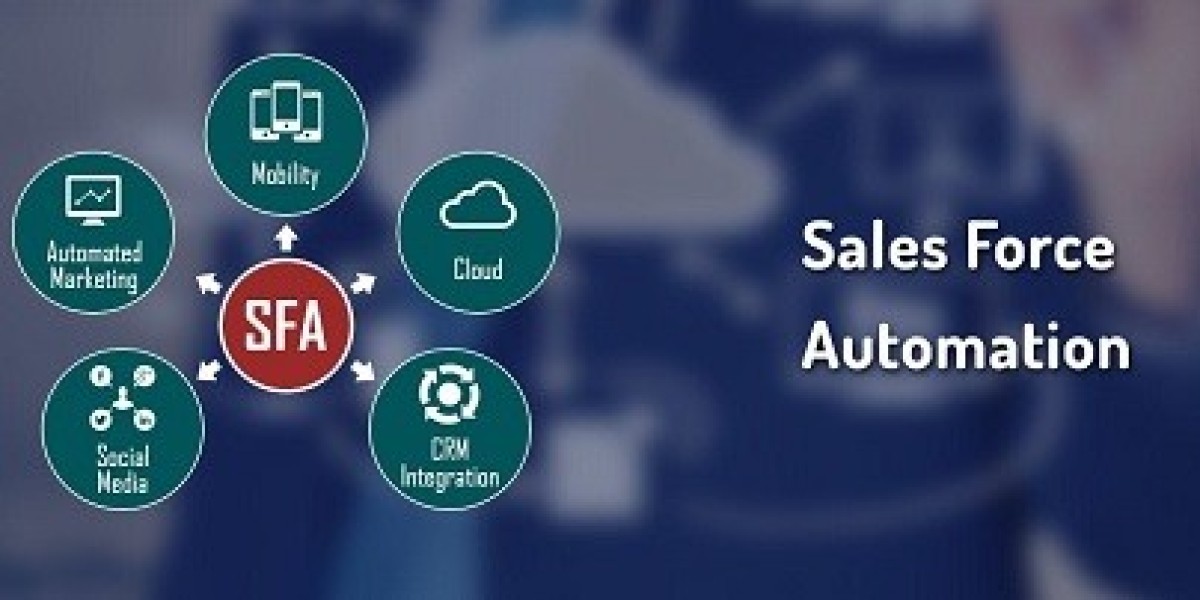Sales Force Automation Market Overview -
The Sales Force Automation (SFA) market has experienced significant growth in recent years, driven by the rising demand for intelligent customer relationship management and enhanced productivity in sales operations. SFA systems automate and streamline critical sales functions, including lead tracking, pipeline management, and follow-up scheduling. As businesses seek to minimize manual tasks and improve customer interactions, the adoption of SFA tools has become a strategic priority. In 2025, the Sales Force Automation market size is projected to grow USD 23.8 Billion by 2032, exhibiting a CAGR of 9.0% during the forecast period 2024 - 2032. The integration of AI and predictive analytics is further revolutionizing the SFA landscape, enabling businesses to optimize sales strategies and drive revenue growth.
Get a sample PDF of the report at –
https://www.marketresearchfuture.com/sample_request/4091
Industry News -
Recent developments in the Sales Force Automation market underscore its rapid evolution and technological advancement. Salesforce, one of the leading players, recently introduced AI-driven features to its Sales Cloud platform, focusing on real-time opportunity scoring and intelligent task management. Microsoft Dynamics 365 also expanded its SFA capabilities by leveraging Copilot, its generative AI assistant, to automate content generation and data analysis for sales professionals. Additionally, Oracle launched updates to its Fusion Cloud CX, offering new sales planning tools and enhanced mobile functionality. These announcements reflect an ongoing industry shift toward automation, mobility, and data-driven decision-making, reshaping how businesses manage sales operations across diverse sectors.
Market Segmentation -
The Sales Force Automation market is segmented by component, deployment mode, application, and end-user industry. By component, the market is divided into software and services. Software continues to dominate due to its core functionality in sales process automation, while services such as implementation, consulting, and support ensure optimal deployment. In terms of deployment, cloud-based SFA systems are gaining traction over on-premise solutions due to lower infrastructure costs, scalability, and remote accessibility. Application-wise, SFA tools are widely used in lead management, sales forecasting, order and invoice management, and customer relationship management. End-user industries adopting SFA include retail, BFSI, healthcare, IT & telecom, and manufacturing, each seeking improved efficiency and customer engagement through digital sales transformation.
Market Key Players -
The competitive landscape of the Sales Force Automation market is characterized by the presence of several global and regional players striving to innovate and expand their market share. Prominent companies include Salesforce, Microsoft Corporation, Oracle Corporation, SAP SE, Zoho Corporation, HubSpot, Inc., Freshworks, Pipedrive, and Insightly Inc. Salesforce continues to lead with its cloud-based CRM and AI integration, while Microsoft and Oracle leverage enterprise-wide ecosystems to enhance their offerings. Zoho and HubSpot cater to SMEs with cost-effective and user-friendly SFA solutions. These players invest heavily in R&D, strategic acquisitions, and product differentiation to strengthen their market position and cater to evolving customer needs.
Regional Analysis -
Regionally, North America dominates the Sales Force Automation market, accounting for the largest share due to the early adoption of cloud CRM solutions, strong presence of key vendors, and high digital maturity among businesses. The United States is at the forefront, with major enterprises leveraging SFA tools to drive competitive advantage. Europe follows closely, driven by digital transformation initiatives across industries in countries like Germany, the UK, and France. The Asia-Pacific region is witnessing the fastest growth, fueled by increasing adoption among SMEs, rapid urbanization, and mobile-first business strategies in countries like India, China, and Southeast Asia. Latin America and the Middle East & Africa are also expanding gradually, as businesses modernize their sales operations and invest in digital solutions.
Recent Developments -
The past year has seen multiple strategic initiatives and product innovations shaping the SFA market. Salesforce launched Einstein GPT, embedding generative AI into its CRM workflows to automate data entry and deliver real-time insights. Oracle introduced advanced sales planning and quota management tools to support complex enterprise needs. Freshworks integrated AI bots to assist sales reps with follow-up actions and meeting preparation. Partnerships and acquisitions are also reshaping the market—HubSpot’s acquisition of Clearbit aims to enrich CRM data with real-time intelligence. These advancements reflect the market’s shift toward intelligent automation, with vendors competing to offer smarter, faster, and more intuitive sales solutions.
Market Dynamics -
Several dynamic factors are driving the growth of the Sales Force Automation market. First, the growing need for sales process optimization and lead conversion efficiency encourages businesses to adopt SFA tools. Second, the rise of mobile devices and remote work models has accelerated the demand for cloud-based, mobile-responsive sales solutions. Third, technological advancements, including artificial intelligence, machine learning, and predictive analytics, are enhancing the functionality of SFA platforms, allowing real-time data analysis and personalized customer engagement. Additionally, the increasing availability of industry-specific solutions helps organizations meet niche requirements, further expanding the market. However, challenges such as data security concerns, integration complexities, and high implementation costs may hinder market expansion in some regions.
Browse a Full Report –
https://www.marketresearchfuture.com/reports/sales-force-automation-market-4091
Future Outlook -
The future of the Sales Force Automation market looks promising, as companies continue to prioritize digital transformation in sales and customer engagement. The integration of AI and machine learning will further refine lead scoring, sales forecasting, and personalized outreach. Voice-enabled SFA, chatbots, and virtual sales assistants are expected to gain popularity, offering conversational interfaces for improved user experiences. Additionally, SFA platforms will increasingly align with marketing automation and customer success tools, delivering end-to-end customer lifecycle management. As enterprises and small businesses alike seek to stay competitive, the demand for scalable, intelligent, and user-friendly SFA solutions is set to rise, propelling the market to new heights in the coming decade.
The Sales Force Automation market is undergoing a significant transformation, fueled by technological innovation, shifting work environments, and evolving business demands. As organizations strive to enhance their sales efficiency and customer engagement, SFA tools provide a critical competitive edge. With robust growth projected across regions and industries, the future of the market lies in intelligent, cloud-native, and integrated solutions that empower sales teams to achieve more with less effort.
Top Trending Reports:
Contact
Market Research Future (Part of Wantstats Research and Media Private Limited)
99 Hudson Street, 5Th Floor
New York, NY 10013
United States of America
+1 628 258 0071 (US)
+44 2035 002 764 (UK)
Email: sales@marketresearchfuture.com
Website: https://www.marketresearchfuture.com








